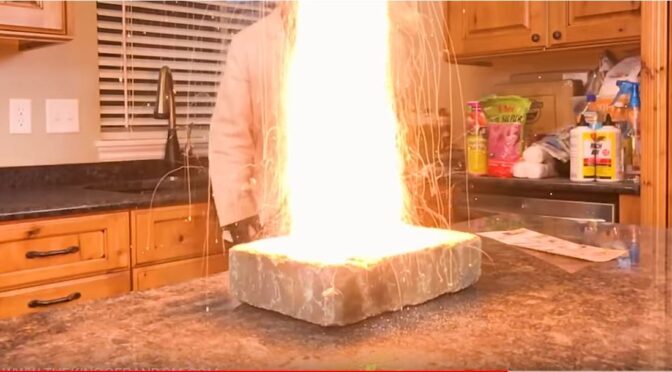Let me open with telling you that I am providing the following information for educational purposes only. I find chemistry fascinating as you can tell by my various posts on parkerizing, acid etching (with apple cider vinegar and with ferric chloride), epoxies and more. So, I’ve seen various posts over the years about making your own black powder and usually filed them away for future reference. What changed was that Youtube actually recommended a video on making black powder and then that led to another and another. I took the three videos I liked the most and decided to share them.
Please, if you try anything, do so safely. Research first, pick safe location and be careful. You accept all liability – I am providing these resources for reference purposes only!!
Starting Basic: The King of Random
The back story is that this guy loved experimenting and posted his projects on YouTube. The genuine tragedy is that he recently passed away in a paragliding accident. This is a very interesting video and sets the stage for do-it-yourself black powder.

In this post, the presenter shows you how to make a basic unrefined black powder with charcoal and then powdered potassium nitrate from stump remover and powdered sulfur from plant fungicide. Note, these are all available at your local hardware store – you need powders and not liquids by the way. It’s a basic process and creates a “green” or unrefined black powder.
A More Refined Approach From the Science Pirate
This fellow is a chemist and really good at explaining what is going on and how to do it. He shows how he goes about processing the 75% Potassium Nitrate, 15% charcoal and 10% sulfur into black powder.

The Best Video: GhoolerHunter Covers An Old Military Method

This fellow really goes into detail behind a process for producing a more refined black powder. He does point out to beware of static electricity if you are using metal trays like he is.
Some Charcoals Are Better Than Others
Interesting enough, having the right charcoal is really important. Some woods are way better than others and I think you’ll find that you will either need to make your own charcoal or will need to do some hunting to find very specific charcoal for good results.
For example, woods to use include certain species of Alder, Balsa, Buckthorn (both alder and carolina), Cottonwood (narrow leaf), Dogwood (cornus florida), Maple, Paulownia, Plum (prunus domestica), and Willow (Black, white, weeping and pacific but not Rocky mountain). To learn more, please see:
- https://pyrodata.com/chemicals/Charcoal
- https://www.skylighter.com/blogs/how-to-make-fireworks/charcoal-making-secrets
- http://www.wichitabuggywhip.com/fireworks/charcoal_tests.html
Other Black Powder Resources
Here are some other resources if you want to read more:
- https://en.wikipedia.org/wiki/Gunpowder
- https://www.thoughtco.com/make-black-powder-safely-4062684
- http://www.mman.us/blackpowderproduction1.htm
- https://www.wikihow.com/Make-Black-Powder
- https://www.skylighter.com/blogs/how-to-make-fireworks/making-high-powered-black-powder
- https://www.askaprepper.com/how-to-make-gun-powder-the-old-fashioned-way-in-less-than-30-minutes/
- http://www.unitednuclear.com/bp.htm
Again, this is all provided for reference purposes only. If you decide to try anything, please research first and put safety before everything else. Also, be sure to comply with all laws and regulations that apply to you.
Sorry to sound like a lawyer but these days, it needs to be said. I hope the info helps you out.
Please note that all images were extracted from the video and are the property of their respective owner.
If you find this post useful, please share the link on Facebook, with your friends, etc. Your support is much appreciated and if you have any feedback, please email me at in**@*********ps.com. Please note that for links to other websites, we are only paid if there is an affiliate program such as Avantlink, Impact, Amazon and eBay and only if you purchase something. If you’d like to directly contribute towards our continued reporting, please visit our funding page.
